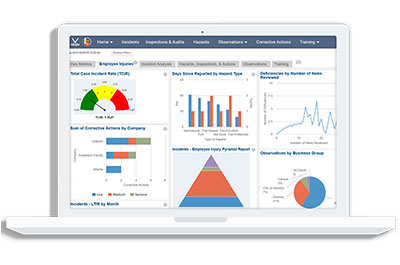Safety is learning

Occupational safety and health professionals are becoming less focused with compliance and increasingly interested in facilitating learning at their organizations.
Researchers have identified psychological safety as central in organizational learning. In her book, “The Fearless Organization: Creating Psychological Safety in the Workplace for Learning, Innovation, and Growth,” Amy Edmondson defines psychological safety as:
-
“Psychological safety is broadly defined as a climate in which people are comfortable expressing and being themselves. More specifically, when people have psychological safety at work, they feel comfortable sharing concerns and mistakes without fear or embarrassment or retribution. They are confident that they can speak up and won’t be humiliated, ignored, or blamed. They know they can ask questions when they are unsure about something. They tend to trust and respect their colleagues.”
To facilitate organization learning, the first thing safety professionals should do is ensure a workplace that’s psychologically safe. Once that’s in place, there’s much more a safety professional can do to contribute to organizational learning. We’ve listed a few below.
 Develop and deliver effective, evidence-based safety and health training: Learning researchers have performed studies and analyzed data to discover what training methods help people learn (and later transfer that learning to job performance) and what doesn’t. For example, the well-known concept of designing training to match different people’s so-called “learning styles” has not been supported by research and is now often referred to as a “learning myth,” whereas techniques such as writing learning objectives, awakening prior knowledge, chunking training materials, providing opportunities for practice and delivering feedback, interleaving, using examples and worked examples, building in prompts for reflection and elaboration, and utilizing spaced practice have been shown to be effective. Read up on evidence-based training research to learn more about how to train employees to work more safely – a great place to start is Julie Dirksen’s book, “Design for How People Learn.”
Develop and deliver effective, evidence-based safety and health training: Learning researchers have performed studies and analyzed data to discover what training methods help people learn (and later transfer that learning to job performance) and what doesn’t. For example, the well-known concept of designing training to match different people’s so-called “learning styles” has not been supported by research and is now often referred to as a “learning myth,” whereas techniques such as writing learning objectives, awakening prior knowledge, chunking training materials, providing opportunities for practice and delivering feedback, interleaving, using examples and worked examples, building in prompts for reflection and elaboration, and utilizing spaced practice have been shown to be effective. Read up on evidence-based training research to learn more about how to train employees to work more safely – a great place to start is Julie Dirksen’s book, “Design for How People Learn.”
Study normal work: Spend less time in your office away from the “sharp end,” where frontline workers are performing the work of your organization, and spend less time completing paperwork. Instead, spend more time in the field studying how work is actually performed (and learning why). Notice we’re talking about how work is performed – not how it’s done or how it’s described in your procedures. To do this, you’ll have to ask workers questions about how work is really done and why it’s done that way. Notice you won’t get real, helpful answers unless psychological safety is already in place and workers trust that they can tell you about things like intentionally not following written procedures. Read Todd Conklin’s book, “Pre-Accident Investigations: Better Questions,” to learn more about this.
Reconsider your incident investigation techniques: While this isn’t true in all cases, it’s still the case that traditional incident investigations too often fall prey to the cognitive biases of the investigator, notably including hindsight bias (in which the investigator uses information available only after an incident to evaluate the actions of workers before the incident) and confirmation bias (in which the investigator has a tendency to find what he or she already believes); propose overly simplistic identifications of a single root cause instead of identifying interrelated and/or systems issues; or wind up pointing at “human error,” possibly leading to pointlessly retraining workers without creating benefits in safety and learning. Consider alternate methods, including so-called learning teams. See the book “The Practice of Learning Teams” by Brent Sutton, et al., for more.
 Reconsider your safety metrics: Although many organizations attempt to measure safety performance using lagging indicators such as incident rates to measure safety, it’s widely believed these are less-than-perfect measures and possibly even misleading. After all, by now many are familiar with the story of the Deepwater Horizon oil spill and how it happened shortly after a gathering to celebrate a lack of incidents. Read Carsten Busch’s “If You Can’t Measure It...Maybe You Shouldn’t” to learn more about safety metrics.
Reconsider your safety metrics: Although many organizations attempt to measure safety performance using lagging indicators such as incident rates to measure safety, it’s widely believed these are less-than-perfect measures and possibly even misleading. After all, by now many are familiar with the story of the Deepwater Horizon oil spill and how it happened shortly after a gathering to celebrate a lack of incidents. Read Carsten Busch’s “If You Can’t Measure It...Maybe You Shouldn’t” to learn more about safety metrics.
Hopefully, you’ve found something of value in this article and can use some of the thoughts and suggested resources to contribute to learning at your organization, leading to increase successes, better safety and more organizational resilience. Good luck and keep learning!
ABOUT THE AUTHOR: Jeff Dalto works with Vector Solutions and Convergence Training. He helped create the American Society of Safety Professionals’s standards on EHS training, and writes and presents frequently on safety and safety training.
This article represents the views of the author and should not be construed as a National Safety Council endorsement.
Post a comment to this article
Safety+Health welcomes comments that promote respectful dialogue. Please stay on topic. Comments that contain personal attacks, profanity or abusive language – or those aggressively promoting products or services – will be removed. We reserve the right to determine which comments violate our comment policy. (Anonymous comments are welcome; merely skip the “name” field in the comment box. An email address is required but will not be included with your comment.)

